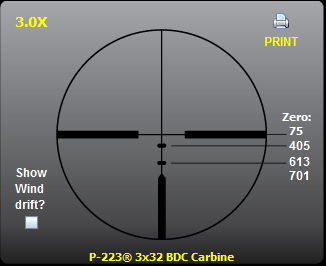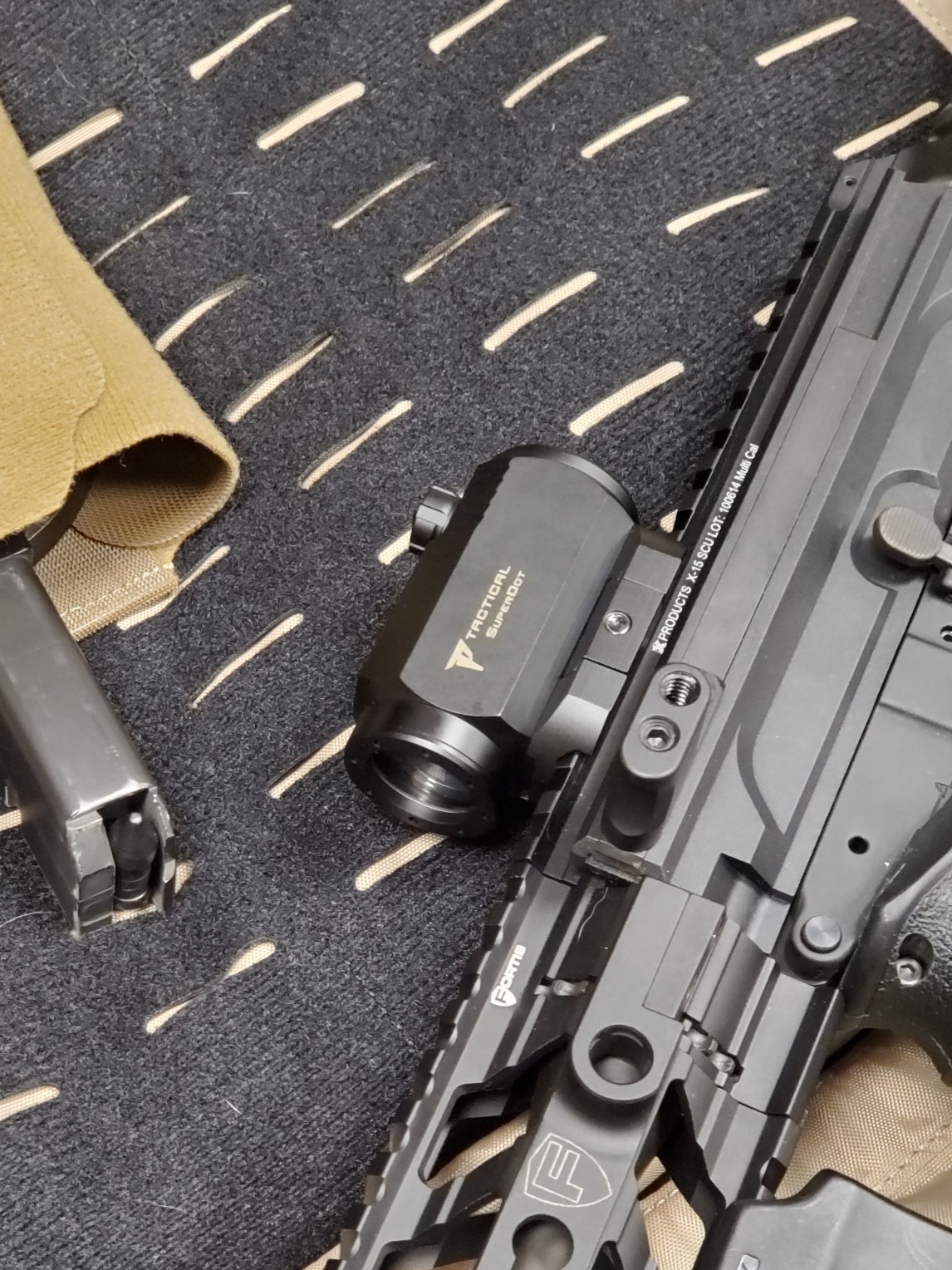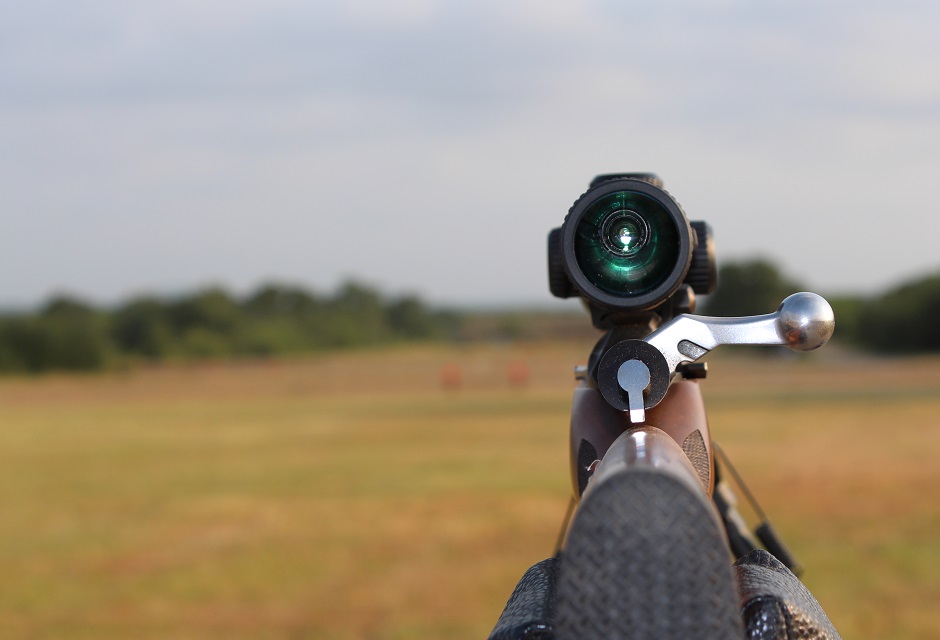There are a wide variety of challenges shooters face when they need to hit targets at a long distance. Not only is your target smaller through the glass (which can be helped by higher magnification, but that high magnification requires incredibly steady hands to avoid a shaky image), but the wind can blow a bullet well off-target the longer it travels and gravity will pull a bullet down. As one of our product specialists once explained, a bullet will drop just as fast as a pen if you drop it. A bullet is being pulled down to the Earth at 32 feet per second the same way you or I when we jump in the air. Just because the bullet moves in the direction fired at a higher rate doesn’t mean the Earth stops pulling on it.
How do you compensate for bullet drop?
The basic method of overcoming gravity when shooting at long distances is to aim over your target. Depending on the caliber of your bullet it’ll fly at different speeds, meaning it arrives at its destination quicker. Therefore gravity has less time to pull it down. But how much do you aim over your target? Well, your distance and the bullet caliber makes this different for essentially every shot. You need the perfect aim, with exact measurements of distance, windage and bullet speed to accurately hit your target. This can make shooting at long distance frustrating, which in turn keeps many from partaking in an extraordinarily fun pastime.
Enter BDC reticles. A BDC (Bullet Drop Compensation) reticle looks similar to a common reticle, but there are extra marks along the bottom post that you can use to line up your shot. To accurately determine your distance it’s best to use a quality laser rangefinder. I find the Nikon RifleHunter 1000 to be a good choice. It’ll give you an extremely accurate reading out to 1000 yards. With this information you can accurately aim over your target so when the bullet drops due to gravity it’ll still be right on target.
But yet again, how do you know how high to aim?
Various rifle scopes may come with their own charts, but with so many rifles, so many calibers and a wide variety of distances it can be tricky to know just what each circle or dash on the reticle means. This is where Nikon’s Spot On Technology comes in handy.
When you buy a Nikon Rifle Scope with a BDC Reticle, you can use their Spot On Technology website to print out ballistics charts that’ll let you know where to aim. This is super helpful and incredibly easy. First (well, first AFTER you get your awesome new Nikon Rifle Scope, such as the P-223 3×32 BDC Reticle Rifle Scope), head over to the Spot On Website. You’ll need to enter a few pieces of information to get to the program, but that only takes a second. Once you’re in you’ll see a page that looks like this:

Nikon Spot on Website
From here you can enter in your scope first, so for my example I’m going to put in the P-223 3×32 BDC.

Select a scope first
Once you’ve chosen your scope you’ll see an example of your reticle. As you can see in the image below, the reticle for the P-223 3×32 BDC Carbine isn’t very busy and is quite easy to understand.

Nikon P223 BDC Reticle
Next, I’m going to choose my ammo/bullet. There are a ton of options here, from Rimfire and Centerfire to Shotgun and Muzzleloaders, so you’re likely to find what you need. You’ll also pick your bullet style, and for this example I’ll use a Supreme Ballistic Tip. You can actually customize this to match what you have, so there’s a TON of versatility here.

Choose you Bullet Second
Now you’ll enter your ballistics information, which is the distance to your target, which you’ll determine with your rangefinder, and the distance you sighted in your scope to.
Once this info has been entered, you can print out a ballistics chart or an image of the reticle like seen above. On that image you see your zero at 75 yards, the first line below it will hit a target at 405 yards and the line below that at 613 yards. With this info, as soon as you know your distance you can get your scope on target very quickly. If your laser rangefinder says a target is 500 yards away, based on the ballistics chart you’ll know to aim between the first and second lines down.
This is especially easy on fixed power scopes like I’ve shown, but there are Nikon Scopes with BDC reticles for variable power scopes as well, and that’s where this really shines. You can print out ballistics charts that show your holdover for every different magnification level. This is where bullet drop compensation can get really tricky, so printing out one of these charts before a hunt or shooting competition will save you a lot of time figuring our holdover in real time. So if you want a different P-223, like the 3-9×40 BDC Rifle Scope, you’ll get a whole bunch of different ballistic measurements. When you’re out hunting and your scope is at low power (or if you mainly shoot at lower power and suddenly need to hit something much further away) and you don’t know your holdovers at higher magnification, your can very quickly get that info and take your shot with confidence.
One last thing you can do with Nikon’s Spot On Technology is update it on the fly with your iPhone. If you forget to print out your ballistic chart or just want to enter your information in real time, an iPhone app allows you to use the many features listed above right from your phone! This is especially useful for those of you more tech-savvy than others, and it represents another great way to enhance the performance of your new Nikon BDC Rifle Scope!
- OpticsPlanet, Inc. Celebrates 20 Years of Gear™ - October 28, 2020
- OpticsPlanet Presents the 2019 Brilliance Award Winners - October 31, 2019
- If You Thought the Battle Mug was Awesome, Wait till you See the Bottle Opener! - June 19, 2013
Related Posts
7 Responses to Bullet Drop Compensation with Nikon Spot On Technology!
Leave a Reply
You must be logged in to post a comment.
« The Armasight OPMOD Gen1RS Night Vision Scope – Accurate, Reliable, Affordable Beat the Heat with Some Great Stay-Cool Gear! »




I WOULD PURCHASE THIS IF IT ALSO HAD A RAIL SYSTEM SO i COULD ADD OTHER LIGHTS, OR A LASER TARGETING LIGHT.
Ok what is new Surefire has been making replacement forearms with lights for year for both Remington and Mossberg, problem is the cost low in being 300.00. You can get a replacement forearm with a rail and attach a 1 inch mount with a tac light a do the same thing. I set up 3 shotguns for what one would cost if I did a surefire replacement forearm.
I just love all the inf and don’t know how to use it . I have wetherby 300mg I use 180gr and I bought Nikon p223 bdc prostaff
dose some one have or know how to get DVD SO I CAN UNDERSTAND . OR SOME HOW!
As someone who does freelance PR work for Nikon I use Nikon’s Spot On Ballistic Program all the time. Having easy and free access over the internet is great. Being able to print the information I want to take hunting with me even better. Just remember that the more accurate the info you enter the more accurate your shot’s will be using the BDC reticle. Works great for those of you who handload as well.
Nikon has the best and simplest Bullet Drop system on the market today, and they essentially copied it from Germany, circa 1945~1960- the original Zeiss Diavari-C 1.5~6, calibrated to the .308 Winchester with 165/168 grain bullet at appx 2780 fps.
I have used several systems and, other than the Zeiss system, which I have used for more than 30 years, this is easily the simplest and most accurate long range shooting system, as long as you have a very accurate lazer rangefinder that will measure your shooting distance, that you can AFFORD to buy.
The custom turrets can be ordered for $99, unless that have had a price hike.
You can also buy the Spot-On software on CD directly from Nikon.